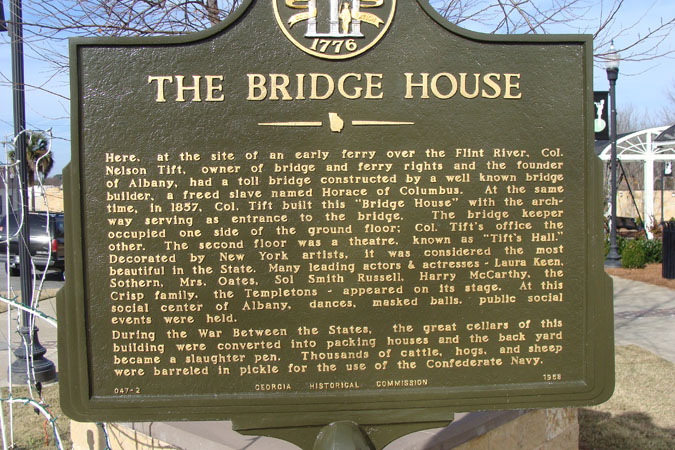This week’s #MarkerMonday explores The Bridge House historical marker in Dougherty County and its builder, Horace King of Columbus. Although he was born into slavery, Horace King became the South’s most prominent bridge builder during the mid-1800s. Albany founder Col. Nelson Tift hired King to build a toll bridge across the Flint River. The entrance became known as the Bridge House and served as a popular social spot for the people of Albany until the Civil War.

In 1824 the enslaved craftsman Horace King began his first job working on a bridge in South Carolina for John Godwin. During this project Godwin noticed the potential King held and purchased him from his owner. The pair traveled to Alabama for a contract to engineer a bridge across the Chattahoochee River to Georgia. King displayed his talents for design and construction, then oversaw the design of multiple bridges without Godwin. Through unclear circumstances, King gained his freedom in 1846, but the two maintained a working relationship until Godwin’s death.
On September 23, 1858, The Albany Patriot noted the beginning of a covered lattice, trestle bridge crossing the Flint River: “Horace King, the celebrated bridge builder, will superintend the work.” Upon entry to Albany, guests were welcomed at the Bridge House; the House held Col. Tift’s office, a theater, and social gatherings for the citizens of Albany. Although the Flint River Bridge was destroyed in 1897 during a flood, the Bridge House is still used today as a welcome center for the city of Albany. The Bridge House also dedicated the Horace King Overlook at RiverFront Park in 2004.
Explore the links below to learn more:
Today In Georgia History – Horace King, September 8, 1807
ExploreSouthernHistory.com - The Bridge House in Albany, Georgia
New Georgia Encyclopedia – Horace King (1807-1885)
The Albany patriot. (Albany, Ga.) 1845-1866, September 23, 1858, Image 2
The Albany patriot. (Albany, Ga.) 1845-1866, October 28, 1858, Image 2
